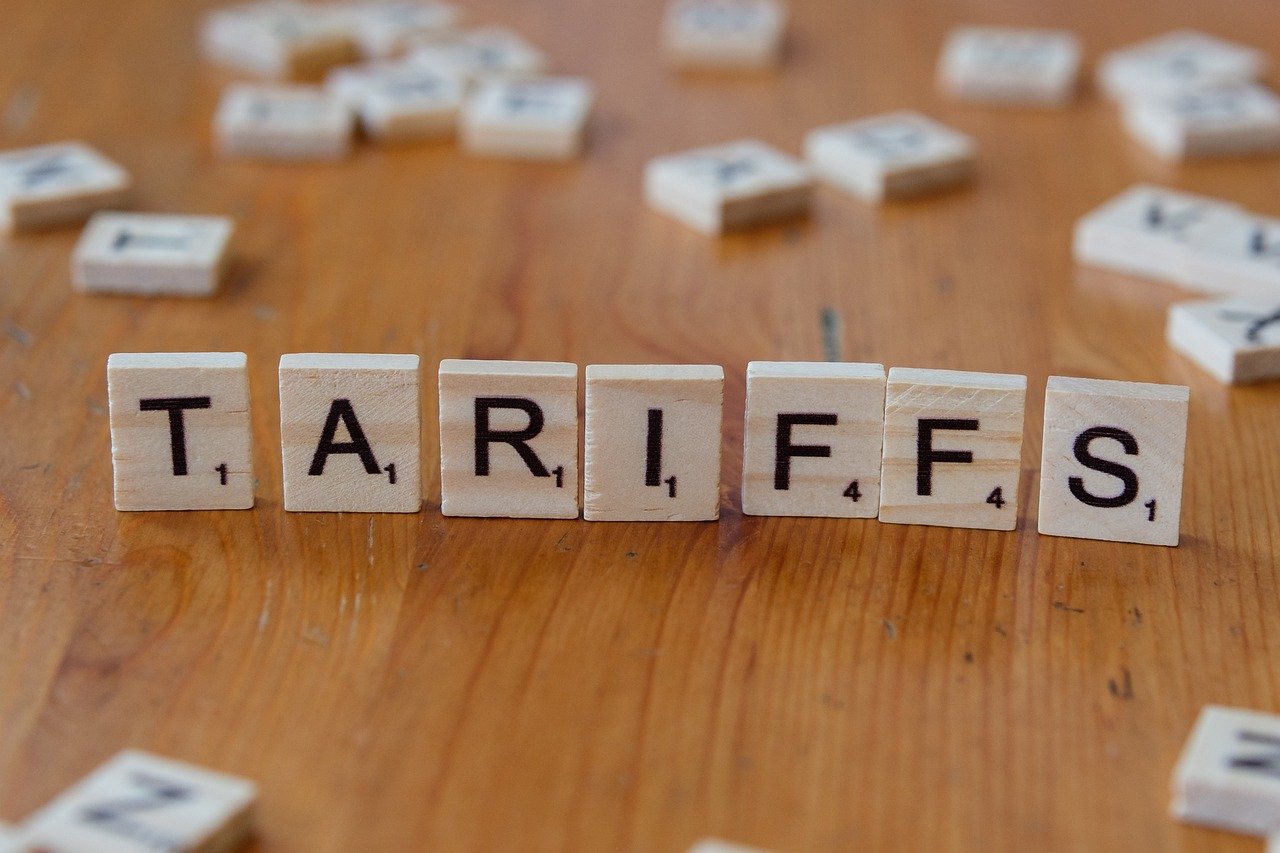
Way back in January, I predicted the “Word of the Year” honors would go to DOGE, Elon Musk’s department designed to further government efficiency. And while my prognostication looked pretty good for a few weeks, it is clear the richest man in the world is struggling with some of his own companies, notably Tesla.
So, we now see Musk less on a day-to-day basis. That we might never see him again in any role misses the bigger point: DOGE has already become mundane and seems to be getting replaced by another modern piece of jargon:
Tariffs
Actually, there’s nothing new here, based on Trump’s use of this economic tool back in his first term. But over the course of the past few weeks, the president has once again stirred it up, now making the new T-word a very popular but undesirable term that is well familiar to people all over the world.
Our sales maven, Paul Jacobs, is always looking for a revenue angle for local radio, again challenged by 2025’s economics and the skew away from linear broadcasting for both content and sales marketing.
Check out his guest blog post and one of those unexpected opportunities for radio sales department in this already sludgy start to the new year. -FJ
For Radio, Will It Be Christmas In April (And Hopefully, May)?
By Paul Jacobs

At the beginning of this year, my family decided we needed to replace TWO CARs—one for my daughter and one for my wife. I can’t tell you how excited I was thinking about the prospect of two of everything—the search, the research, the dealerships, the negotiations, the cost—you name it. Like the automotive version of evil twins.
Like so many Michiganders, we attended a packed Detroit Auto Show in early January so we could get a broad sense of the latest models. If you didn’t see the news this year out of the Motor City, our friend Sam Klemet (former CEO of the Michigan Association of Broadcasters) is now running and reimagining this epic show, now back in the dead of winter where it belongs. This year, the Detroit Auto Show featured a huge variety of new four-wheeled products, drawing big crowds.
Our initial plan was to scope out the cars at the show, buy my wife’s first, wait a few months, and then buy Natalie’s.
But then something happened—tariffs.
 By late last month it was clear this new economic strategy was fast becoming a reality and the automotive industry was going to be especially affected. And fortunately for us, both Lori and Natalie (pictured) decided they liked the Subaru line, so we thought we had a strong negotiating position going in for “hers and hers Subarus.”
By late last month it was clear this new economic strategy was fast becoming a reality and the automotive industry was going to be especially affected. And fortunately for us, both Lori and Natalie (pictured) decided they liked the Subaru line, so we thought we had a strong negotiating position going in for “hers and hers Subarus.”
As we approached the end of the month, Subaru was already reacting to an expected wave of U.S. tariffs. With an announcement they “could not guarantee pricing after April 2nd,” we changed our strategy. We visited our local dealership the next day and bought TWO CARS IN ONE DAY—something I could not ever imagine doing.
We weren’t alone—the dealership was packed. And while we got a decent deal, we would’ve had a much better negotiating position if it weren’t for the threat of tariffs and the uncertainty they’ve brought into the automotive marketplace.
How did March end up for American car dealerships? According to Morning Brew, “Last month, people across the US raced to upgrade their wheels before 25% tariffs kicked in on foreign-made cars, leading to the biggest rise in vehicle sales in two years, per Bloomberg. Seasonally adjusted auto sales jumped 5.7%, marking their largest increase since January 2023.”
their wheels before 25% tariffs kicked in on foreign-made cars, leading to the biggest rise in vehicle sales in two years, per Bloomberg. Seasonally adjusted auto sales jumped 5.7%, marking their largest increase since January 2023.”
And it wasn’t just automobiles. The article goes on to note, “Retail sales overall jumped 1.4%, data released by the Commerce Department yesterday shows. Excluding cars, retail sales went up .5%. Even though autos had the biggest pre-tariff buying frenzy, sales were higher across 11 of the 13 categories the government tracks.”
What set off this frenzy? Uncertainty. In early April, Mark Cuban posted on BlueSky that “It’s not a bad idea to go to a big-box store to get lots of consumables NOW, before retailers have to restock with the new inventory reflecting the cost of tariffs.” (The caps and italics are mine.)
And last week, it was the dagger—an update from Joe Mandese from MediaPost, confirming what most of us have been dreading—Q2 is shaping up to be the lowest growth quarter for advertising since the last so-called “ad recession.” The chart below requires no expert analysis or interpretation:
 While I’m not an economist nor do I want to get political, virtually every expert has concluded that tariffs will raise prices not only on imported goods, but also goods made in America that contain parts from other countries (remember, many U.S.-made cars and their parts travel across the border to Mexico and Canada back and forth as many as seven times because that’s where their supply chains are located).
While I’m not an economist nor do I want to get political, virtually every expert has concluded that tariffs will raise prices not only on imported goods, but also goods made in America that contain parts from other countries (remember, many U.S.-made cars and their parts travel across the border to Mexico and Canada back and forth as many as seven times because that’s where their supply chains are located).
But we cannot answer the three key questions: how much will they go up, on which products, and when?
While we can argue about the efficacy of this economic approach here in America, one thing we can agree on: radio has an opportunity to tap into this uncertainty and create a “Christmas in April” moment. If consumers are going to increase their purchases in a compressed period of time (like during the Christmas holiday season), advertisers need to take advantage. And who better to partner with than the best local media partner out there—radio?
So Mr. and Ms. DOS, you are excused if you didn’t see this coming when you were first forecasting your 2025 sales projections. I checked in with Fred who sat through every session at Radio Ink’s “Forecast” event in New York City in November, and he doesn’t remember tariffs being a topic. A number of “mavens” talked about the prospect of more deregulation from a Trump-driven FCC, but no one imagined so much change being stirred up in so short a time frame by this White House.
So, how to make the chaos work for you? On my agenda would be to create a variety of pre-tariff packages and consider some of the following moves THIS WEEK:
1. Grab those automotive dollars – We all know car dealers have shifted their money to digital, but to take advantage of this anomalous situation, they need to reach a broad swath of the population quickly with a strong call-to-action. Who does that better than radio—reach is our strength. Put together a special car-dealer package that combines on-air, digital sponsorships, and live events (yes, the dreaded car dealer remotes need to happen in big and impactful ways). The entire team needs to come together, including the air staff, promotions, sales, and more in order to make this work. And while Fred won’t be happy with this suggestion, consider more than one car dealer remote per day if the demand is there.
2. Champion your best asset—your personalities – Radio has something that cannot be replicated by YouTube, Spotify, or other digital channels—local air personalities who can truly be influencers here. Most of you probably are having your on-air staff do testimonials and live reads. In this situation, they are more valuable than ever (and should be priced accordingly). Who else can sell this message better than them? But we also know that in an algorithm-driven world, there is increasing interest among radio listeners to actually engage with local air personalities. Our just-released Techsurvey 2025 found one-half (51%) of radio listeners are interested in meeting your talent at events—especially the youngest listeners. If you are going to promote remotes to take advantage of this opportunity, put your personalities out front of the pitch.

3. Create retail events – Malls and downtown shopping districts have budgets, but they usually hold them for traditional holidays like Black Friday and back-to-school. Many regard the post-Easter time as a slowdown in sales. But that might not be the case this year. Like with the car dealers, a package that includes a live event like you would do during the Christmas holidays makes sense now. It could be for a couple of hours or an entire weekend—great revenue for the station, but also great visibility.
4. Don’t forget digital – Chris Brunt (pictured), the lead on our Jacobs D.R. initiative (Digital Revenue) reminds all of us digital should be a part of every sales package. Many clients (especially car dealers) want to know the metrics behind their investment and also have a large percentage of their budgets allocated to digital platforms. So, become the full-service provider they need and carve out a larger portion of their budgets at a time when they need to spend. If you need more ideas about how to digitize these opportunities, contact Chris.
dealers) want to know the metrics behind their investment and also have a large percentage of their budgets allocated to digital platforms. So, become the full-service provider they need and carve out a larger portion of their budgets at a time when they need to spend. If you need more ideas about how to digitize these opportunities, contact Chris.
5. Short videos are another piece of valuable content – This is another major Techsurvey finding. (Stay tuned for an upcoming blog post from Fred on the topic.) These quick but effective videos can be hosted by your personalities (see #2) and recorded and posted in minutes. You can utilize them in both the pitch and the sell.
6. The website and mobile opportunities – Create sponsorable resources on your website and mobile app if you’re not trapped in an “umbrella app” platform. Our mobile company, jacapps, has created a “guide” feature where stations can create listings of companies—in this case, those with pre-tariff savings, for example—that could also live on your station website. You could charge by the listing, and the whole platform could be available for sponsorship.
7. Don’t forget the obvious: dashboard metadata – Take a page or two from that Quu webinar from earlier this month where they unveiled their “2025 In Vehicle Visual Report.” You can help your tariff-driven advertisers and their marketing where it counts the most: on their dashboard screens. As we learned in Techsurvey this year, drivers (and passengers) are paying attention to the “metadata messages” stations post. More info is here.
8. Tap into the “Fix It” economy – As prices rise, some consumers will delay purchases, choosing instead to repair what they already own. This opens up a new segment of revenue with car repair, HVAC companies, appliances, plumbers, and more.
9. Go to school – Another revenue option is to contact local universities, trade schools, unions, independent schools and other educational groups to promote learning new skills not only to be applied at home, but in case someone is looking to change careers.
1o. Tariff Tuesdays (or Thursdays) – Each hour, feature one local business and their special pre-tariff offer as a :60-second feature. Also, have them listed on your website, on your app, and in your newsletter (if you have one) for additional up-charges. Or consider a “Twofer Tariff Tuesday” where you announce two discounts offered on the designated day. (Better than hearing those two Golden Earring songs again!)
One thing’s for sure—conditions on the ground are changing fast, and radio needs to show its agility to respond just as quickly. Using last year’s tactics in 2025 isn’t likely to show better results. So, adapt to the moment, and make your local marketing assets and expertise available to those who need it the most—hometown retailers and businesses.
 These are certainly confusing times, but station leaders who move quickly and opportunistically will be able to reap the benefits. This is also a time when the truly great stations will position themselves as a valued resource for their clients. And successful broadcasters will generate useful “war stories” to use the next time there is this type of disruption (remember, many stations pivoted during the early days of COVID and made the best of a bad situation, while positioning themselves as a vital resource for their community and for local businesses).
These are certainly confusing times, but station leaders who move quickly and opportunistically will be able to reap the benefits. This is also a time when the truly great stations will position themselves as a valued resource for their clients. And successful broadcasters will generate useful “war stories” to use the next time there is this type of disruption (remember, many stations pivoted during the early days of COVID and made the best of a bad situation, while positioning themselves as a vital resource for their community and for local businesses).
Let’s not forget, given the fluidity of politics and the economy, the tariffs phenomenon could become a long-running part of America’s tactics. Or they could all end on Friday.
Carpe diem.
And whatever you do, don’t get stuck buying two cars on Twofer Tuesday.
- For Radio, Will It Be Christmas In April (And Hopefully, May)? - April 21, 2025
- The Revolution Will Not Be Monetized - December 30, 2024
- What Kind Of Team Do You Want To Be? - October 4, 2024





Excellent Article. Let’s hear it for Two-Fer’s!
Because two is always better than one.